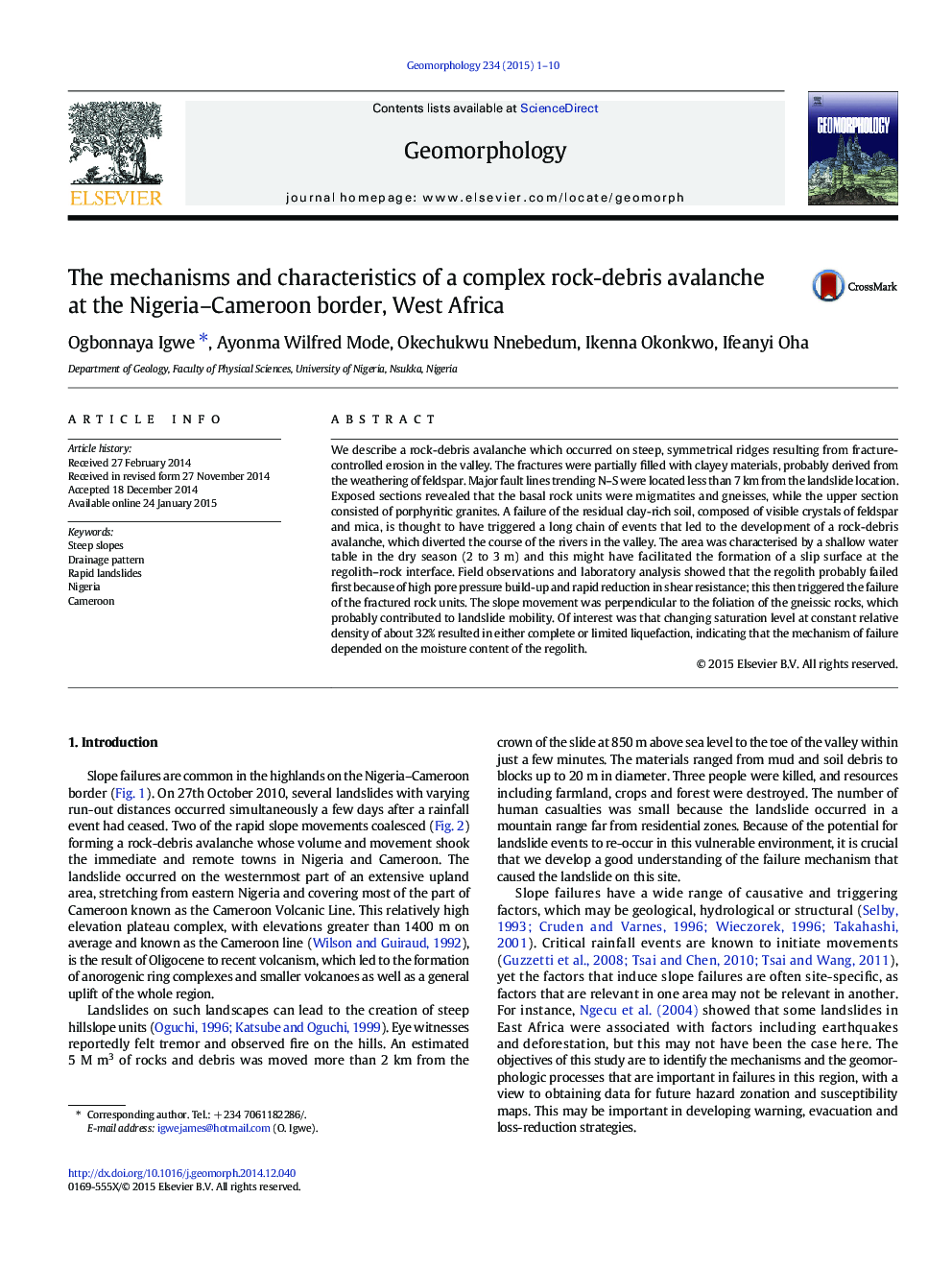| Article ID | Journal | Published Year | Pages | File Type |
|---|---|---|---|---|
| 6432176 | Geomorphology | 2015 | 10 Pages |
We describe a rock-debris avalanche which occurred on steep, symmetrical ridges resulting from fracture-controlled erosion in the valley. The fractures were partially filled with clayey materials, probably derived from the weathering of feldspar. Major fault lines trending N-S were located less than 7Â km from the landslide location. Exposed sections revealed that the basal rock units were migmatites and gneisses, while the upper section consisted of porphyritic granites. A failure of the residual clay-rich soil, composed of visible crystals of feldspar and mica, is thought to have triggered a long chain of events that led to the development of a rock-debris avalanche, which diverted the course of the rivers in the valley. The area was characterised by a shallow water table in the dry season (2 to 3Â m) and this might have facilitated the formation of a slip surface at the regolith-rock interface. Field observations and laboratory analysis showed that the regolith probably failed first because of high pore pressure build-up and rapid reduction in shear resistance; this then triggered the failure of the fractured rock units. The slope movement was perpendicular to the foliation of the gneissic rocks, which probably contributed to landslide mobility. Of interest was that changing saturation level at constant relative density of about 32% resulted in either complete or limited liquefaction, indicating that the mechanism of failure depended on the moisture content of the regolith.
